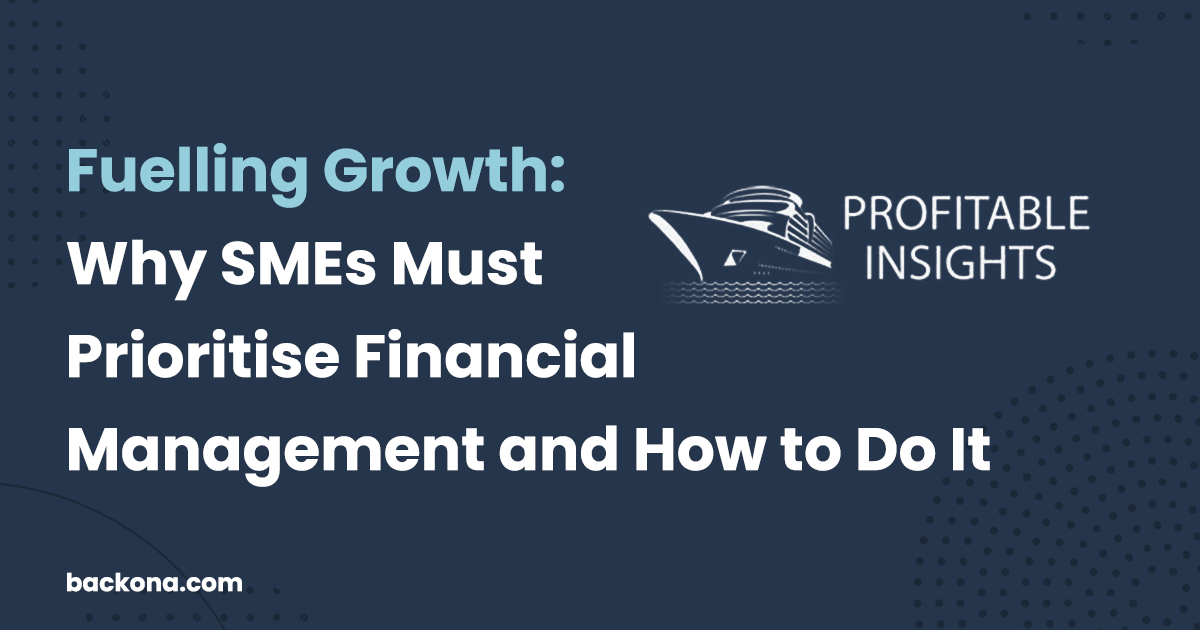How can I calculate the cost per employee per project? Will an additional 10% on top of my quote cover my profitability margin?
These are the questions I am commonly asked, especially by entrepreneurs at the beginning of their journey. The answer will depend on the company’s circumstances and the state of its financial management.
Forecasting may not top a small business owner’s to-do list, but it’s crucial to running a successful company.
But how can you do it right? After all, your small business is not a little big business. It is not just a matter of budgeting. So, what are the most common differences and how can small businesses get better at business predictability?
Higher risk of failure
Most SMEs that I work with are managed by their owners. Their business is usually the primary source of income to provide for themselves and their families. If the business fails, there is no additional source of income. Big businesses tend to have multiple owners who often can draw income from other businesses simultaneously and do not rely on dividends to live off.
And as recent years have proved, small businesses’ purse is more affected by external economic circumstances, such as pandemics, tax legislation changes or interest rate hikes, than large corporations.
Product or Service Range Constraints
Big businesses rely on multiple revenue streams with diverse products or services catering to a broader customer base. They also have greater access to resources such as capital, advanced technologies, and specialized expertise, which may be less readily available to smaller businesses.
Most small businesses are niche with a local or regional market presence, combined with a smaller resource pool, requiring very different management approaches. In case of a market crash, small businesses have very little flexibility, particularly regarding cashflow. Sure, there are options to consider, e.g., as a bank loan with its financial burden to be felt for many years or pivoting to a new market, which would require time and up to three years to make the shift successful.
So what strategies can SMEs adopt to overcome external turbulences and survive management failures?
1. Understand your business financials
Your business is not too small to make sense of your financial numbers. Yes, forecasting may conjure up feelings of dread, and some business owners find it tedious or intimidating. But it is often the most important pillar of growth. Without looking into the future, your business won’t be able to prepare for the worst or be ready for the best. Sales targets are excellent indicators of the company’s appetite. Still, without having solid insights drawn from past and present data and marketplace trends, this strategy remains as effective as a crystal ball divination.
Forecasting may seem like yet another item to add to the to-do list, but when business owners start looking at numbers, they discover the path to their personal income stability and growth by:
- helping your plan for a better financial future
- informing business decisions, and lastly,
- preventing any nasty tax bill surprises.
2. How to develop a cashflow forecast
Seasonal variations in sales affect small businesses more often than larger organisations. Realistic cashflow forecasts will not only help you see any storms brewing up on the horizon but also help you validate your decision whether to chase a new growth opportunity.
Forecast requires three ingredients: a template, knowledge of financial management and discipline.
Often small business owners are disheartened by their attempts to assemble numbers on a spreadsheet. But these numbers usually stop at reconstructing the past cash. In comparison, a solid forecast should also include cashflow, sales and expenses details. And that requires an eagerness to deepen your knowledge of financial management and discipline. Having a well-optimised template will not only help get a detailed overview of the business health but allow you to dive deeper into trends, consolidating sales strategy and predicting the health of your organisation.
3. Cashflow and profit uncertainty
A small firm can go a long way without profit, but this depends on the nature of the business and the market it serves. The downfall begins when they can’t meet payments.
When things don’t go as planned, it’s time to look at increasing profit margins to improve your business predictability. Financial data analysis can quickly reveal if reviewing costs, constraining expenses, improving productivity, or increasing prices is the best strategy.
4. The upside
Starting a business requires passion and a huge dose of optimism. Without it, the dream of being a business owner would remain just that. However, learning how to weather market instability and growth fluctuations and draw insights from financial data will be crucial for a business’s success.
If you have any questions about this article or would like to chat about your cashflow projections, please feel free to contact us. We’d be happy to help.
Find out more
If you are working in the building and construction industry – please join us for a free interactive webinar where we will show practical ways to create effective quotes bespoke to your business.
When: 7 September at 3:00 pm BST
Book your free ticket: Here
Article written by: Profitible Insights

Leave a Reply